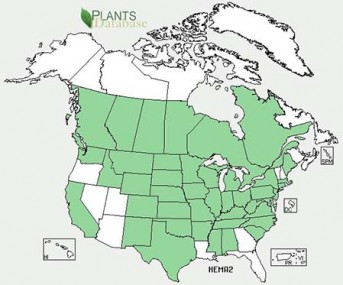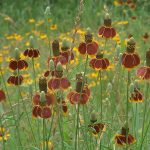Maximilian Sunflower
Helianthus maximiliani
Maximilian Sunflower is a large, native, cool season perennial forb, that grows large and clumpy, often 4 to 10 feet tall. Although it can grow in a variety of conditions, it prefers moist clay-like soils, soil depths of 4 inches or more, gentle slopes, and full sun. Soil, moisture, and topography can be variable, but Maximilian Sunflower will not tolerate shade. It tends to grow very tall in moist rich soil and may become top-heavy when in bloom. Growth is poor on gravel, dense clay, or saline soils. Although the protein value of Maximilian Sunflower is low, it is a palatable livestock forage species. Moderate grazing can increase the presence of Maximilian Sunflower. It can be utilized as a hedge or natural screen because of its height. It is used as a conservation planting for habitat development, prairie restoration and landscaping, and range and pasture maintenance. It can be used in filter strip plantings. It has been used with native grasses in Kansas to revegetate coalmine spoils. Butterflies, beetles, and long- and short tongued bees consume the nectar or pollen produced the flowers of Maximilian Sunflower.
Lifespan: perennial
Season: cool
Uses: amnenity grassland, reclamation, CRP, pollinator, wildlife habitat, biodiversity
Native or Introduced: Native
Annual Average Precipitation: 10 inches
Field Seeding Rate (lbs/acre): 4 to 6
Turf Seeding Rate (lbs/1000 s.f.): n/a




